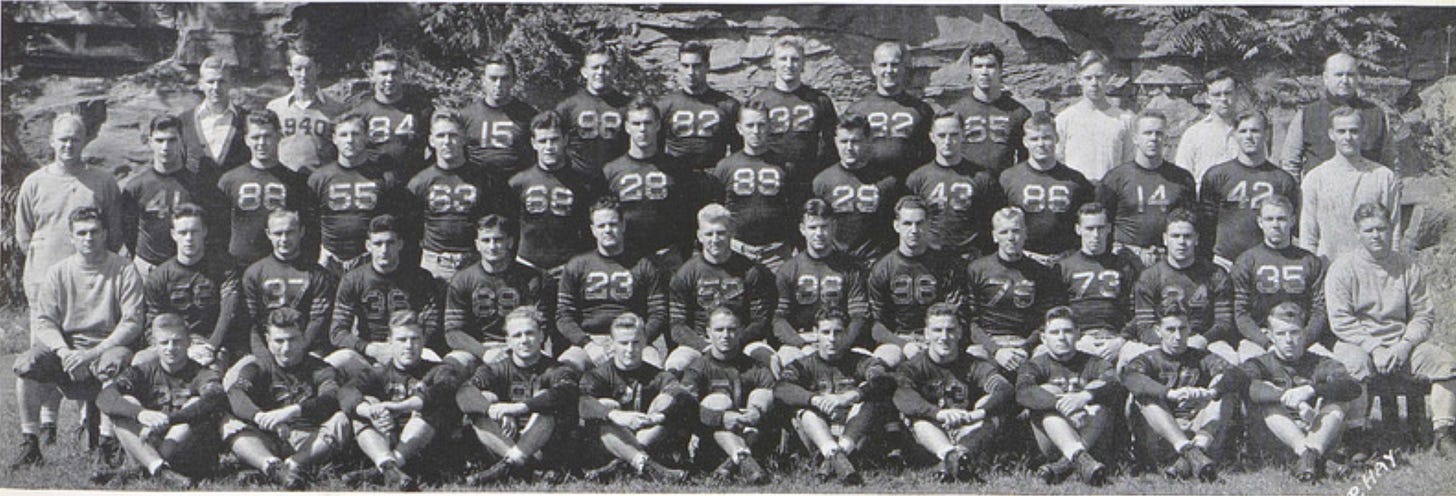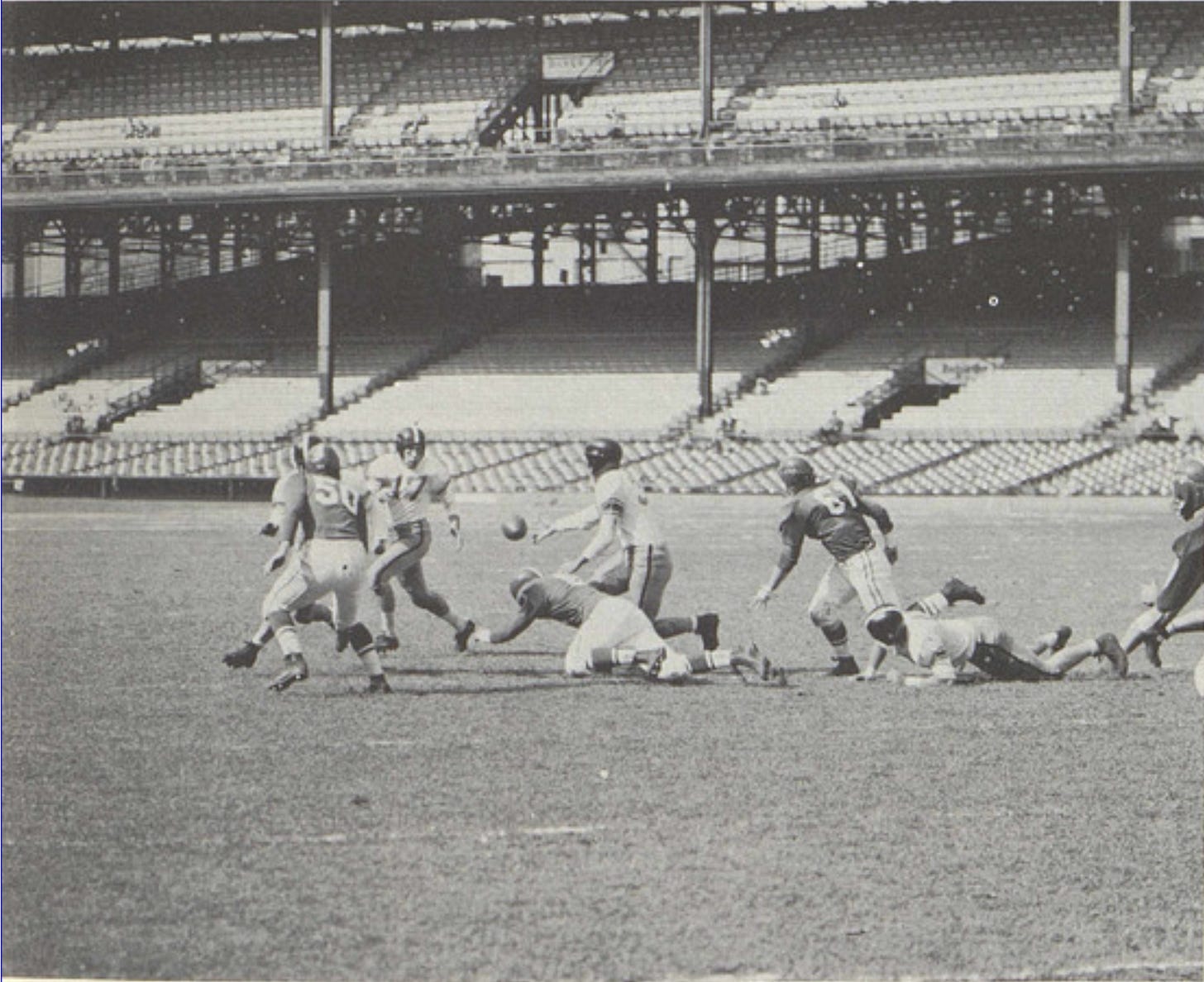Stadium Size, Football Droppers, and Deemphasizers: Carnegie Mellon
Carnegie Mellon University began in 1900 with funding from Andrew Carnegie. Commonly referred to as Carnegie Tech, a 1967 merger with the Mellon Institute resulted in today's incarnation. Carnegie Tech's football team arrived in 1906, primarily playing nearby small colleges and normal schools.
That pattern remained the same for a few years, but a shift in the Skibos' (now Tartans) fortunes began in 1914 when they hired the former Chicago All-American Walter Steffen as head coach. Although Steffen remained a Chicago resident rather than moving to Pittsburgh, he slowly increased the program's competitiveness and scheduling. They played 3 or 4 big-time teams per year in the early 1920s and 4 to 6 per year from the mid-1920s through the 1930s.
As documented in the linked story, many of the program's high points came during Steffen's tenure, including victories over Knute Rockne's Notre Dame teams in 1926 and 1928. The late 1930s saw another ascendence under Bill Kern when they earned a Top 10 ranking, won the Lambert Cup for Eastern supremacy, and played in the 1939 Cotton Bowl.
During their time at the top, the Tartans called Forbes Field or neighboring Pitt Stadium home.
Their schedule and fortunes declined in the early 1940s, and they shut down the program for several war years before returning in 1946. However, school president Robert Doherty, who previously limited scholarship monies to those donated yearly by alums, eliminated scholarships and deemphasized football in 1948.
Despite its change in stature, the landlocked university's football team continued playing their games at Forbes Field, often playing before only a few thousand fans.
Things changed in 1960 after the razing of several campus buildings that adjoined the practice field, which sat in a natural bowl on campus. In place of the buildings, CMU built the Skibo Bowl, sometimes called the Tech Bowl, which had formal seating for 4,500 and plenty of additional room on the grass bowl opposite the grandstands.

The Skibo Bowl was demolished in 1988 and replaced in the same spot as part of a broader campus construction effort. Its replacement, Gesling Stadium, seats 3,900, and the Tartans have played there ever since.

Although CMU has played a small-college football schedule since the late 1940s, it was not until 1973 that the NCAA created its three-tiered divisional system, under which CMU participates at the DIII level. Since then, they have had several periods of sustained success with teams that advanced to the DIII playoffs.
CMU becomes the first school reviewed in this series to deemphasize football and move directly from the scholarship program to the nonscholarship level. (Catholic U. made the same shift but went 35+ years without football.)
2024 Uniforms
This space typically shows concept uniforms for schools that no longer play football. However, CMU plays football today, so their 2024 team picture is shown instead.
Next up: Vermont
Ranking by Stadium Size
Below are the schools reviewed to date, ranked by stadium size. The stadiums’ opening and demolition years (if applicable) are also noted.
Catholic (Brookland Stadium): 30,000 | 1924 - 1985
Denver (DU/Hilltop Stadium): 30,000 | 1925 - 1971
Marquette (Marquette Stadium): 24,000 | 1924 - 1977
Xavier (Corcoran Stadium): 15,000 | 1929 - 1988
Gonzaga (Gonzaga Stadium): 12,000 | 1922 - 1949
California State University, Fullerton (Titan Stadium): 10,000 | 1992 - TBD
Boston University (Nickerson Field): 10,000 | 1915 - TBD
Vermont (Centennial Field): 10,000 | 1923 - TBD
NYU (Ohio Field): 5,000 (est.) | 1897 - 1947
San Francisco (St. Ignatius Stadium): <5,000 (est.) | c. 1909 - c. 1930
Carnegie-Mellon (Skibo Bowl): 4,500 | 1960 - 1987 | Gesling Stadium: 3,900 | 1990 - TBD
Sewanee (McGee Field): 3,000 | 1891 - TBD
Schools to Review
California State University, Long Beach | University of California, Santa Barbara | Case Western | Chicago | CCNY | Creighton | DePaul | Detroit | Drake | Loyola (Chicago) | Nebraska-Omaha | Pacific | St. Louis | Santa Clara | Tampa | Washington University in St. Louis | Wichita State
Football Archaeology is reader-supported. Click here to buy one of my books or otherwise support the site.





